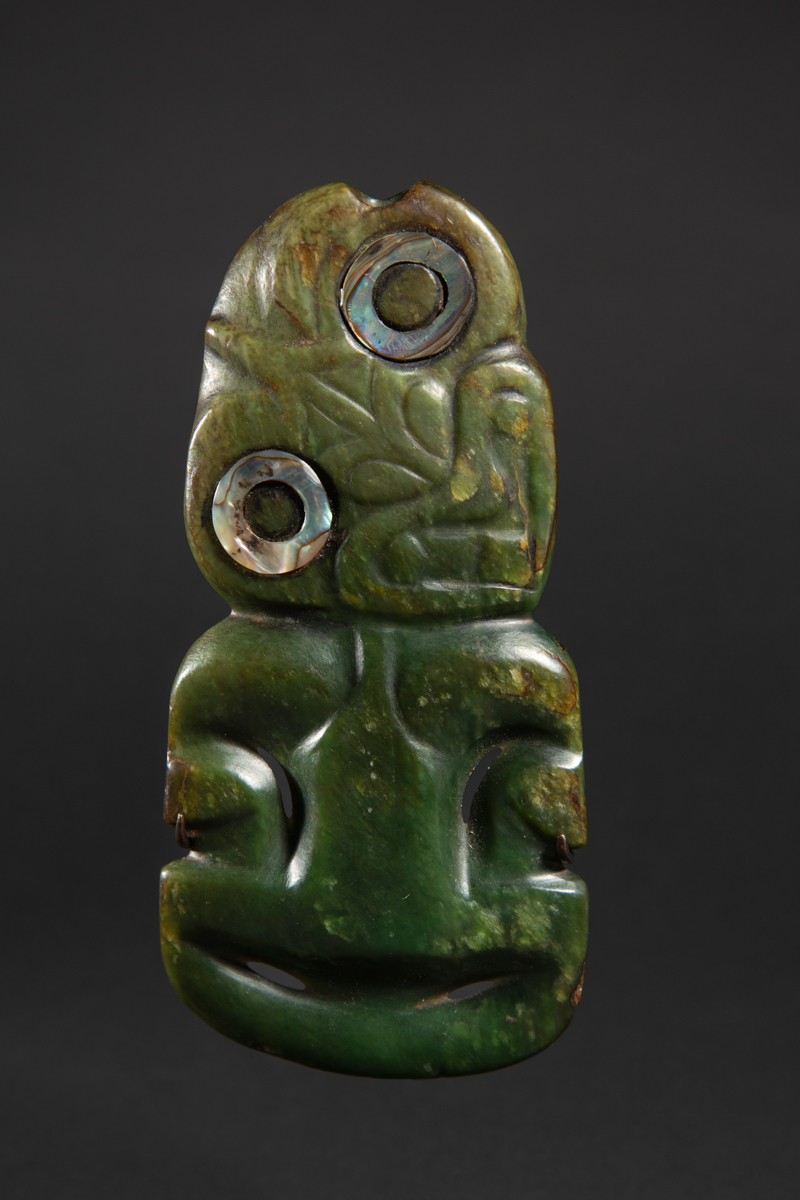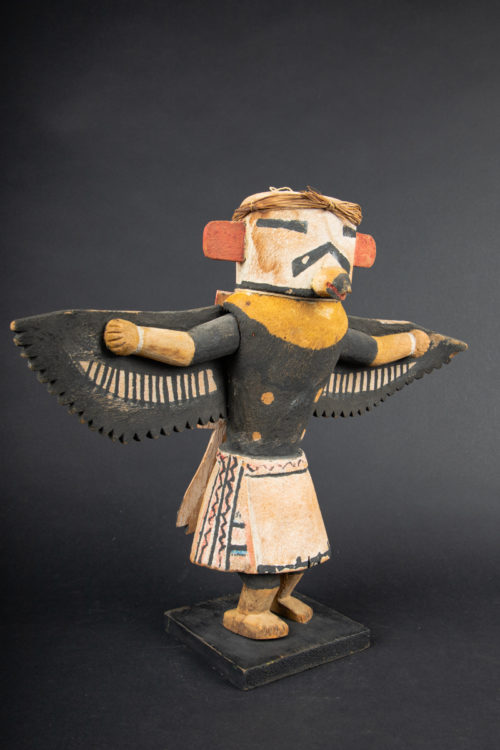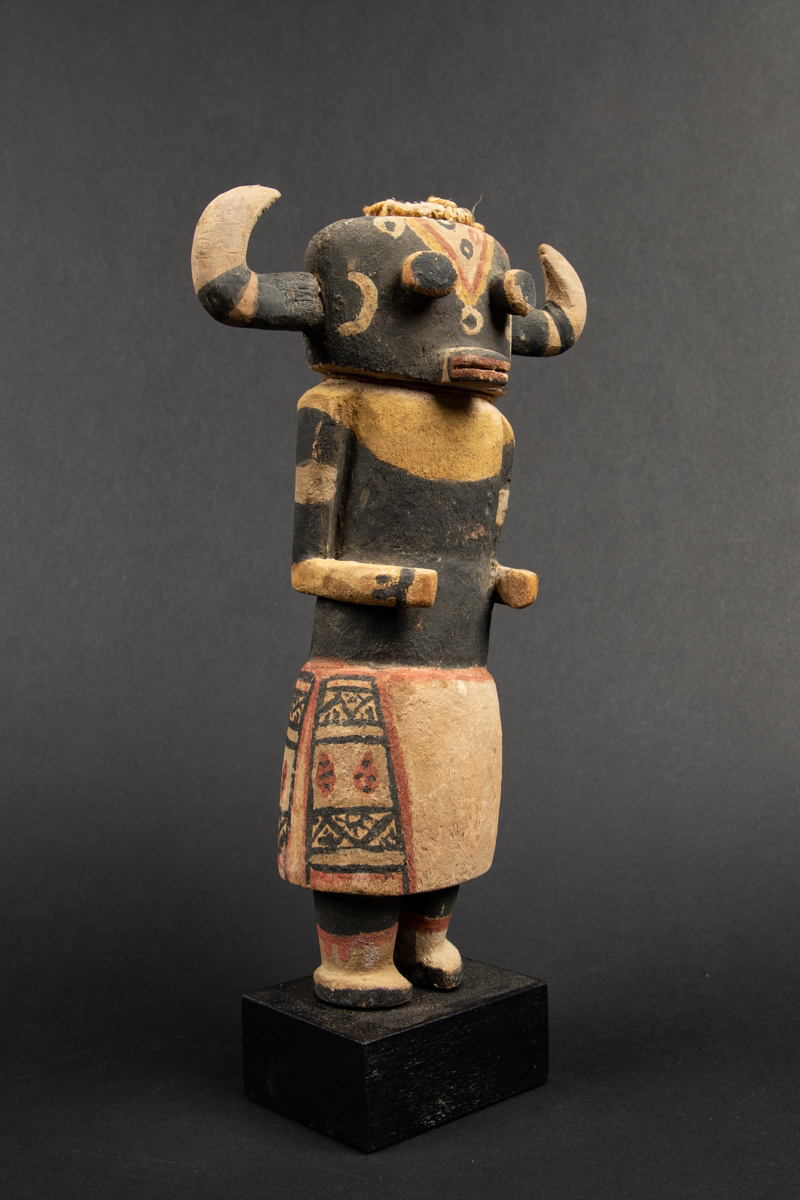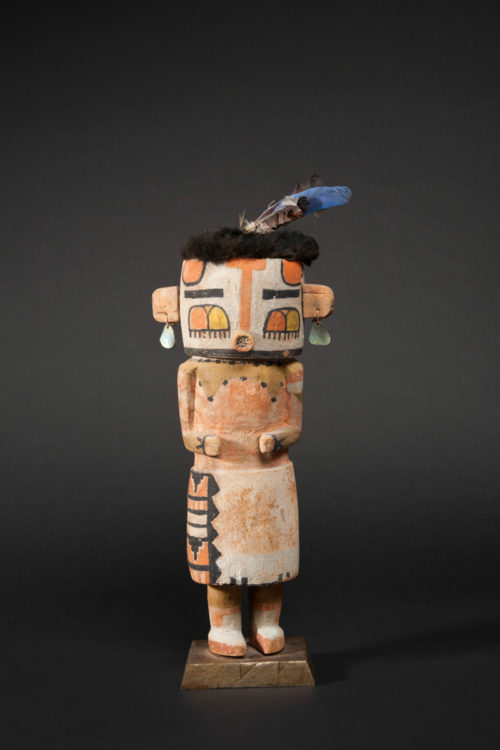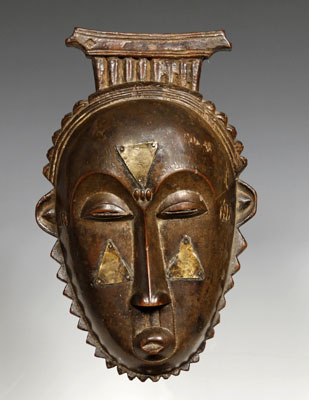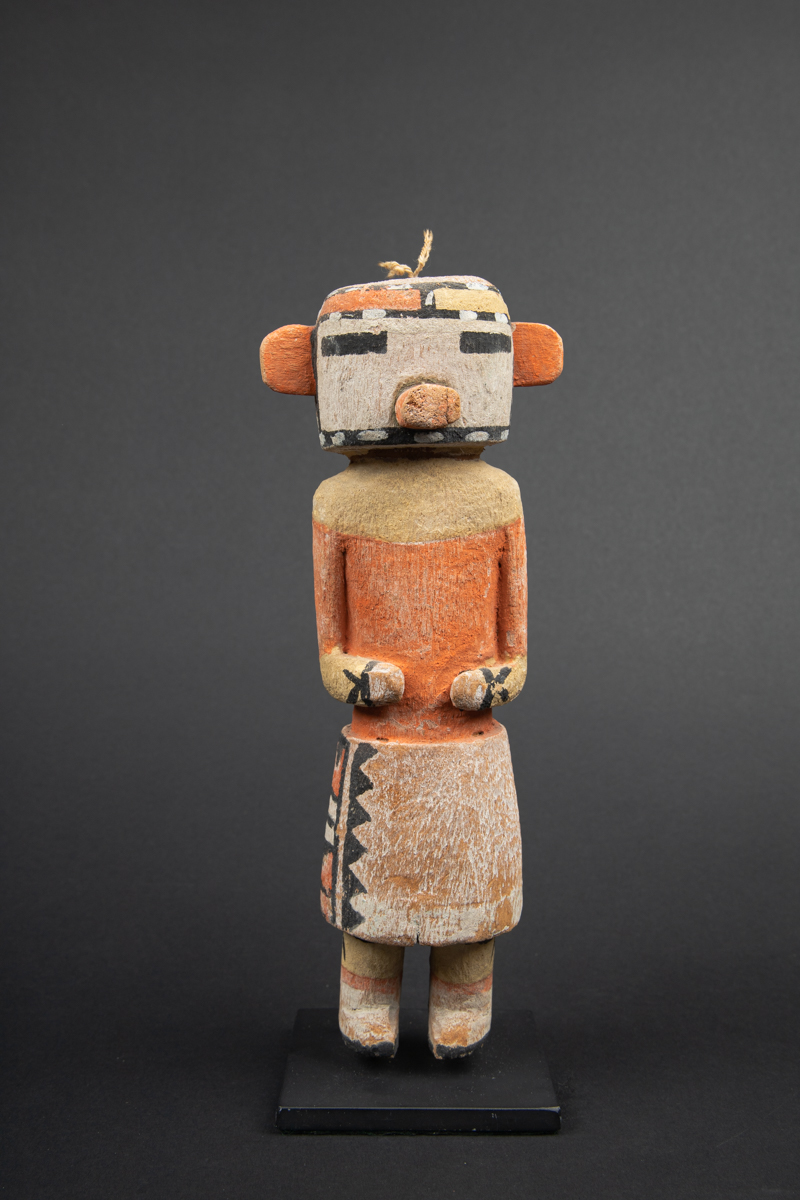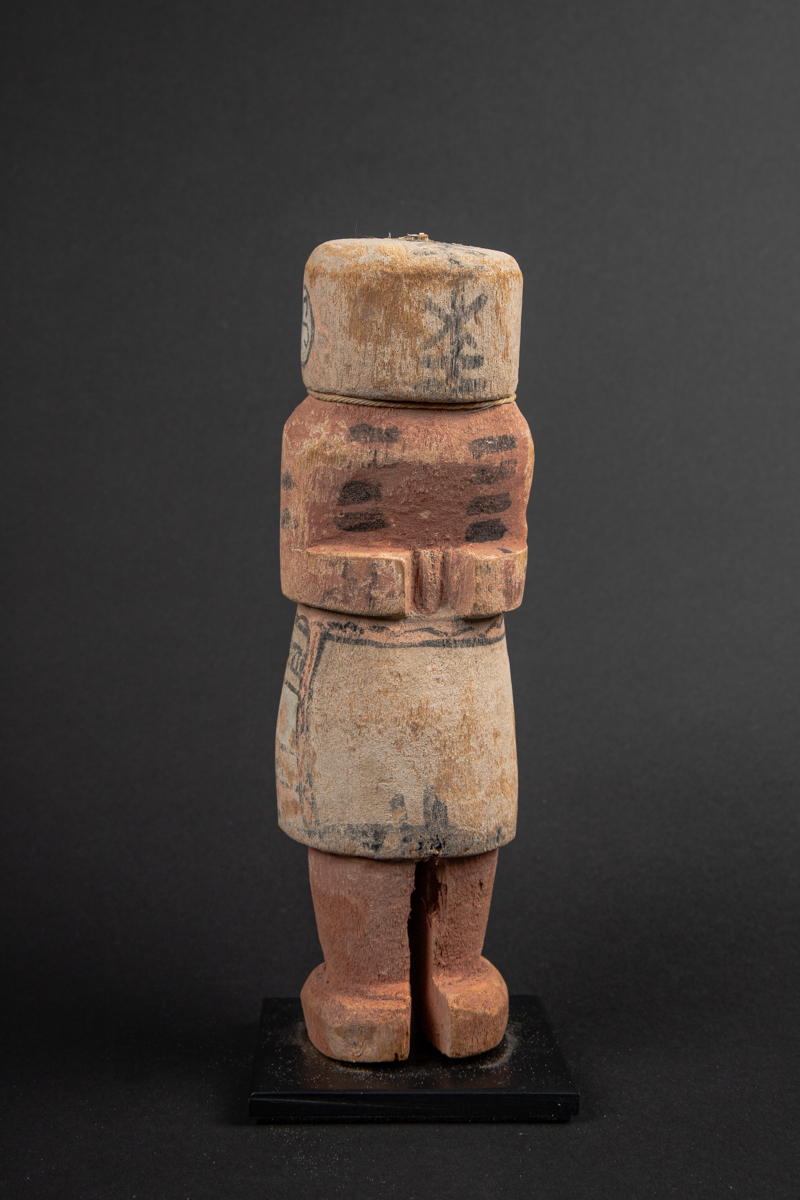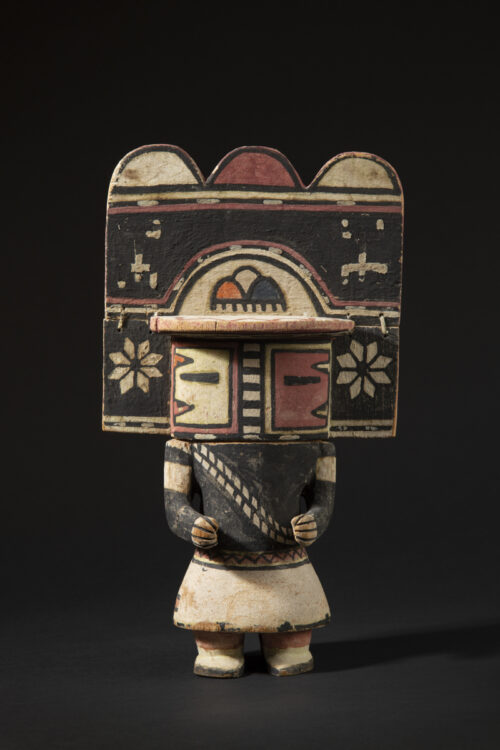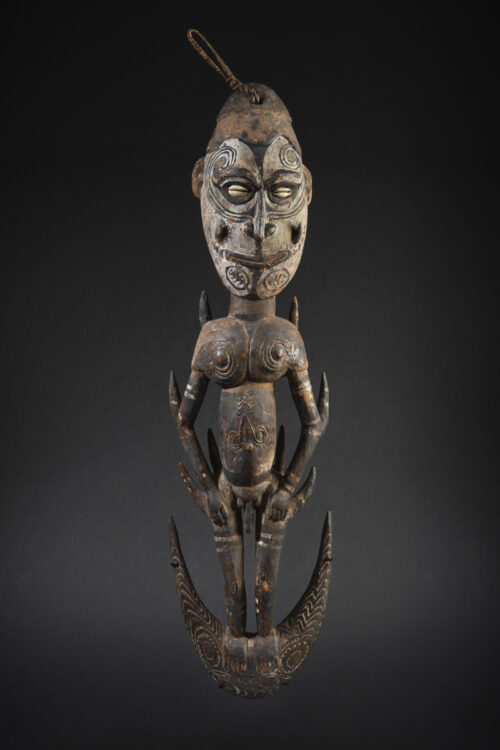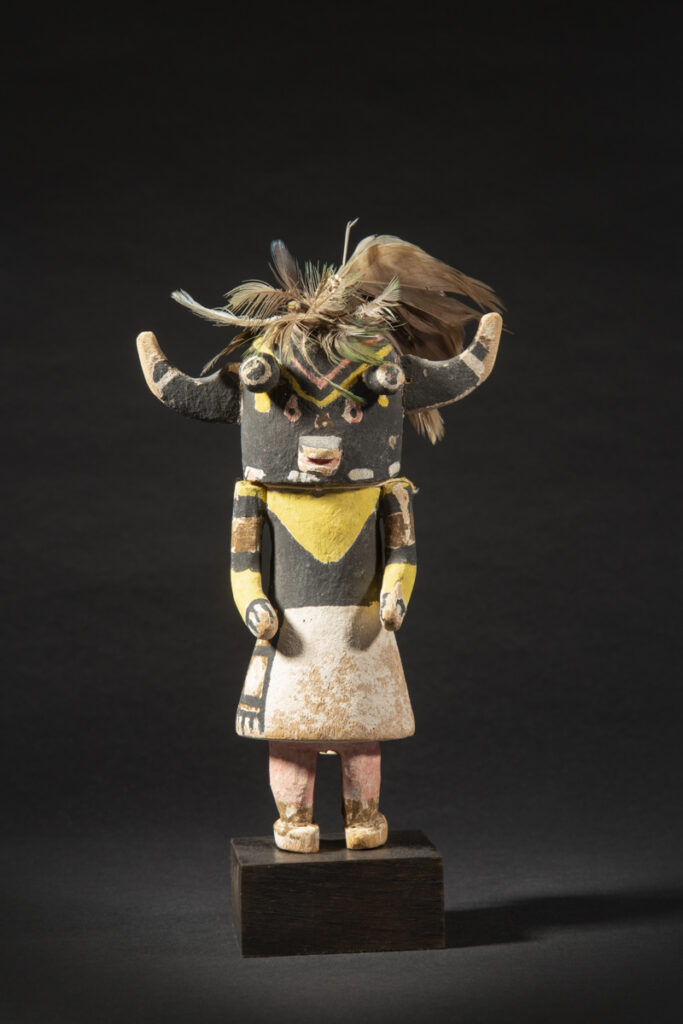Archives | New Zealand
Hei Tiki
New Zealand
Large Hei Tiki pendant, Maori
Carved greenstone (Pounamu – nephrite) and abalone (paua shell)
19th century or earlier
Height: 5 ½ in. (14 cm)
Ex collection Serge Brignoni (1903-2002), Switzerland
Ex collection Edmund Muller (1898-1976), Beromünster, Switzerland, acquired in 1956 (inv. n° 3720c)
Ex Sotheby’s, New York, November 22th, 1998, “Property from the Foundation Dr. Edmund Müller”, lot 6
Ex collection Leo & Lillian Fortess, Honolulu, acquired at the above auction (inv. n° 161G)
Ex collection Eric & Esther Fortess, Boston
Ex collection Alex Philips, Melbourne
Sold
This carved figure is a representation of the Maori people’s original ancestor. This Hei Tiki pendant was carved in a superb piece of nephrite (pounamu in the Maori language). This greenstone, which is found only on the South Island of New Zealand, was a highly valuable material and particularly prized by the Maori for its hardness and its color.
The figure is shown head-on, its head leaning to the left, and sticking its tongue out – the symbol of the power of the warrior in Maori art. The facial features (bridge of the nose, mouth, eyes) are delicate, carved deeply into the stone.
Hei Tiki pendants were worn around the neck on a narrow cord of woven fibers. These ornaments were prestigious, and were passed on from generation to generation. Hei Tiki were said to confer the protection of the ancestors of the clan to the wearer, with the clan’s affiliation going back to Tiki, the primordial man.
The figure is shown head-on, its head leaning to the left, and sticking its tongue out – the symbol of the power of the warrior in Maori art. The facial features (bridge of the nose, mouth, eyes) are delicate, carved deeply into the stone.
Hei Tiki pendants were worn around the neck on a narrow cord of woven fibers. These ornaments were prestigious, and were passed on from generation to generation. Hei Tiki were said to confer the protection of the ancestors of the clan to the wearer, with the clan’s affiliation going back to Tiki, the primordial man.
Explore the entire collection








